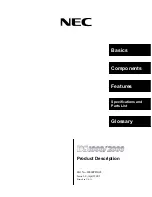
l
The bandwidth required by UMTS services is larger than the processing capability of the
GSM standard transport network. Therefore, when the standby channel is used, the Quality
of Service (QoS) of only high-priority data flows can be guaranteed.
In a GSM+UMTS base station, the route backup mode with IP common transmission has the
following limitations:
l
The route backup function is not applicable when the base station uses the IP over E1
common transmission.
l
The route backup mode is not applicable to the ports on the UTRPs for GSM or UMTS
transmission. It is applicable only to the ports on the GTMU and WMPT panels.
l
In route backup mode, the FE ports of one type on the GTMU and WMPT panels are
interconnected. The FE ports of the other type on the two boards are connected to the BSC
and the RNC.
shows the transmission cable connections for a GSM+UMTS base station in route
backup mode with IP common transmission when the FE optical ports on the GTMU and WMPT
are interconnected and the FE electrical ports on the two boards are connected to the BSC and
RNC.
Figure 5-22
Transmission cable connections with FE optical ports for interconnection and FE
electrical ports connected to the BSC and RNC
Table 5-27
Transmission cables with FE optical ports for interconnection and FE electrical ports
connected to the BSC and RNC
SN
Description
T1 and T2
.
T3
For details, see
shows the transmission cable connections for a GSM+UMTS base station in route
backup mode with IP common transmission when the FE electrical ports on the GTMU and
WMPT are interconnected and the FE optical ports on the two boards are connected to the BSC
and RNC.
Figure 5-23
Transmission cable connections with FE electrical ports for interconnection and
FE optical ports connected to the BSC and RNC
BTS3900
Hardware Description
5 BTS3900 Cables
Issue 04 (2011-02-15)
Huawei Proprietary and Confidential
Copyright © Huawei Technologies Co., Ltd.
5-21
















































